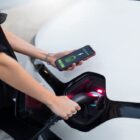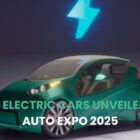Increasing EVs and government regulations on charging station setup
The central government has been trying to develop a robust infrastructure as urban citizens are more inclined to adopt EVs. Thus, more emphasis is being given to the electrification process on a priority basis of petrol pumps all over the country. in April 2019, the government approved FAME (Faster Adoption & Manufacturing of Electric (& Hybrid) vehicles scheme. Also, the Power Ministry had given out an official address expressing the need to launch Public Charging Stations all over the country.
Who is eligible to set up public charging stations?
The document issued by the concerned authorities states that any entity or individual can launch a public charging station. They need to ensure that these stations meet the set protocols, performance, and technical standards. These guidelines have been set clearly by the Central Electricity Authority and Power Ministry. Although such guidelines are in place, a good number of EV owners tend to face problems arising from a lack of charging stations.
Challenges faced by EV owners
Some society buildings have denied permission to EV owners to install charging stations, especially in their society building’s parking area. So, charging the EV scooter or car becomes a massive challenge for those living in high-rise apartments. To help such owners, it has become important to educate the mass about the urgent need to develop an EV charging infrastructure. Others can conveniently visit the nearest EV charging point in Delhi to get their vehicle charged quickly.
What should you be aware of as an Electric Vehicle owner?
As an EV owner, you need to be aware of your rights. If residing in a society building, then you should know what legal demands you can make from the society members about charging your EV vehicle. It is not always possible to take your electric scooter and charge it inside your home as there is always the risk of fire and shock.
What you can do to charge your vehicle?
Concerning personal charge point insulation, the authorities at Smart Grid & Electric Vehicles’ had given out a statement. According to them, EV owners residing in apartment complexes can establish charging points using their existing power connections. Their officials also have been conducting camps at several apartment complexes for creating awareness among the public. The campaigns also are made for facilitating charging infrastructure.
EV charging facilities in buildings
The government has been providing EV owners with lucrative incentives and subsidies. Residential communities are also provided with certain mandates to follow. MoHUA (Housing & Urban Affairs Ministry) recently amended the 2016 MBBL (Model Building Byelaws) to accommodate EV charging provisions in buildings. Certain amendments also have been introduced to boost semi-public charging station insulation in community premises. Residential housing societies, Under Sec. 10.4 are to provide EVs with charging facilities at 20% of the total ‘vehicle parking/holding capacity at their premises.
Other rules implemented
Besides the above, building premises also have been mandated to set up additional power loads. It should be equivalent to the power that is desired to operate simultaneously all charging points with a 1.25 safety factor. Such amendments are to be abided by all buildings. It includes both residential and commercial societies. The only exception made here is independent residences. In case you are unable to derive a solution to charge your EV battery, then you may drive to the EV charging station in Lajpat nagar.
EV battery health maintenance
In any Electric Vehicle, irrespective of its brand, the battery is undoubtedly the most vital part. It is a fully functional, fully charged battery that powers the vehicle. It is also quite expensive and has evolved over time. Hence, it is your duty as an owner to maintain it properly so that it remains functional for a long time until it is time to be replaced with a new one.
Will it be safe to leave your EV plugged in overnight?
You may perhaps have the habit to leave your rechargeable items like iPods and phones to get charged overnight. The common issue faced with such acts is that it causes the battery to degrade fast. Will the same thing occur with your EV if you leave it in the charging position all the time? EVs are designed with systems that ensure the battery does not get overcharged. Hence, it is safe to leave them plugged in overnight!
Preserving the battery
If your EV battery is not in use, then it is your duty to ensure it is well preserved. If sources are to be believed, it is stated that keeping EVs plugged in even if not in use is a wise strategy. It will ensure that your EV stays fully charged all the time. You don’t have to worry about losing your charge only to get stranded in the middle of the road.
How do EVs prevent their batteries from getting overcharged?
The system created in the EV is designed to detect how close the battery is to get fully charged. Once it gets the signal, the charging process starts to slow down automatically without anyone’s intervention. Moreover, the vehicle uses a special method referred to as ‘Trickle Charging’. This is to maintain intelligently a full battery charge without actually overdoing it. Then, the EVs onboard systems start to monitor as well as allocated dynamically the required charge.
Go through the owner’s manual
When buying an Electric Vehicle, you are sure to be provided with an Owner’s Manual. You are strongly recommended to go through it sincerely and understand how to use and maintain the vehicle as well as the battery. Different vehicles are created in diverse ways. Hence, they could warrant different treatment. You need to know how to maintain your EV battery, thus ensuring you enjoy driving your EV whenever and wherever you desire to.
Charging the EV
You may choose to charge your Electric Vehicle at your home as mentioned above. But then the benefits offered by EV charging stations near the south ex market are many. You just need to take your vehicle to the nearest charging point. Although you have to wait for a few minutes for your vehicle to get fully charged, you can be assured of driving without any hiccups through the busy Indian roads.
Choose a reliable charging station
If you have finalized taking your EV to a charging station, then make sure it is reliable and fits perfectly the ‘charging’ needs of your type of vehicle. Being compliant will mean, you can be free from unwanted hassles. Simply check the app to find out a charging point close to your office, home, or wherever you travel!




